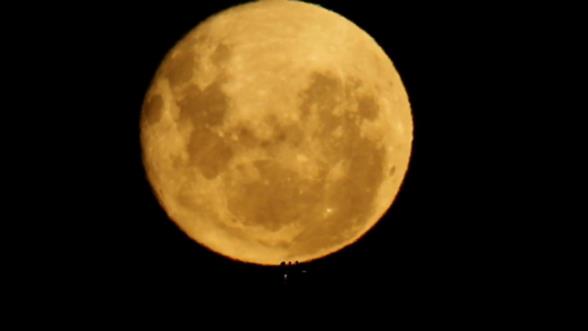Norm,
Thanks for the link to the video. Very nice. And always fun to see what we can figure out from these! You wrote:
"No refractive flattening that I can detect."
I suspect the slightly gibbous phase is creating that
illusion, visually "cancelling" the flattening. If you grab a frame from the video (see attached) just a bit after half of the Moon clears the hilltop and then toss it into an image editing program, you can try to fit ellipses to the outline, matching the "full" limb on the right and being sure to go past the gibbous limb on the right. When I do this I get a flattening of roughly 9%, but since this is a rough process I could believe anywhere from 7% to 11%. Later when the entire Moon just clears the hilltop (also attached), which would imply an altitude about 15 minutes of arc higher than the first case, I measure a flattening of roughly 4%. So how high was the Moon, and therefore how high is the ridge? A quick check on the silhouettes of the people compared to an average angular diameter of the Moon makes them about 2.9 minutes of arc tall and if I figure a typical human height, I calculate a distance of 2.14 km which is nicely consistent with the
statement from the photographer in the caption saying he was 2.1 km away.
You added:
"Wonder if there's any data that could be taken as a function of time, vis a vis dip."
No. No connection to dip in any way. Thank heavens! But the changing refraction CAN tell us the Moon's altitude even though we don't have a sea horizon.
-FER
----------------------------------------------------------------
NavList message boards and member settings: www.fer3.com/NavList
Members may optionally receive posts by email.
To cancel email delivery, send a message to NoMail[at]fer3.com
----------------------------------------------------------------
Attached File:

Attached File:










